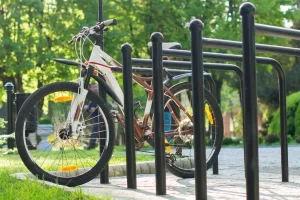Successfully enjoying a trip is rare when one isn’t fully prepared for it. A fly fishing retreat can easily fall into this category given the requirement not only for gear but also skills and expertise. However, guided fly fishing trips in MT can be pretty hassle-free since a professional always accompanies the party.
Nevertheless, the people who are fishing need to make an effort to perfect a few basic things to have a good time on a fly fishing trip. So here are a few tips to ace fly fishing as a beginner.
- Pick the right body of water
Given that close to 15.8% of the population of the US, including a large chunk in the state of Montana, goes on fly fishing trips annually, there are a few different water bodies that a beginner can choose from.
However, the suggested water body for a newcomer to the activity is a smaller water body. It is far safer for practice. Moreover, once the person has practiced enough, they can move on to larger bodies of water, including rivers.
- Learn a basic fly fishing cast technique
A basic fly cast is a cornerstone for every fly casting technique. Hence, it is advised that all newbies learn how to do this.
To execute this cast, the individual should begin with the rod tip pointed down and the line put out in front of them on the water. They will advance from this stance until the rod tip is behind them. Then they must stop to allow the line to unfold behind them. Following that, they need to accelerate forward in order to cast the line ahead of them.
- Get ahold of good fishing gear (including clothing)
Now, packing the right thing is often key to having a good and stress-free time. Especially on a trip that heavily relies on one particular activity like fly fishing, where catching trout is the main attraction.
There are three main categories of items that one needs to focus on when packing up for fly fishing trips in MT. These are:
- Clothing: This includes clothing to be worn outside the fishing trips, a wide-brimmed hat, undergarments, a fishing outfit, and a fully waterproof rain jacket.
- Fishing equipment: The website will usually list the depth of the river. Based on that, purchase the waders and wading boots. Moreover, pack essential gear like a fishing rod, reels, and lines – both big and small, as well as sink tip lines.
- Miscellaneous supplies: Never forget to take sunscreen, sunglasses, personal hygiene supplies, insect repellent, reading material, binoculars, and flashlights with extra batteries.
- Know a few knots
Begin with large and simple knots to gain confidence in the basic knot-tying techniques. The seven simplest knots for any beginner are:
- Arbor knot
- Woolly buggers
- Blood knot
- Woolly worms
- Double-surgeon’s knot
- Non-slip loop knot
- The improved clinch knot
Ultimately, any trip is about having a good time and returning relaxed and rejuvenated. The first step to achieving that on a fly fishing trip is to choose the correct spot, learn a few basic knitting and casting techniques and pack the right gear.
Forgetting to do any of the things mentioned above may not have very dire consequences. However, they can weigh an individual down with stress due to a lack of experience.





